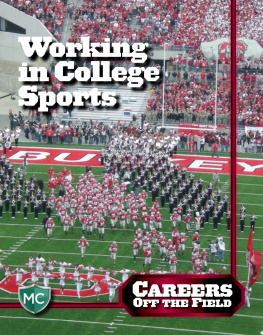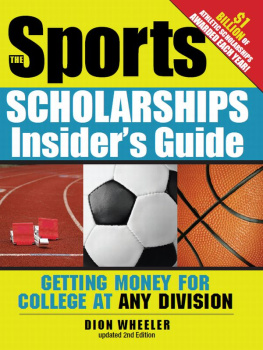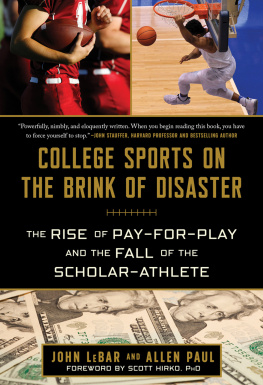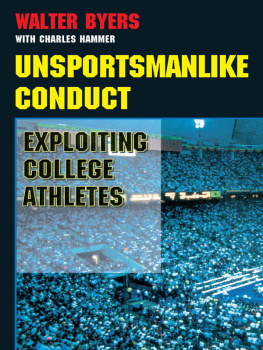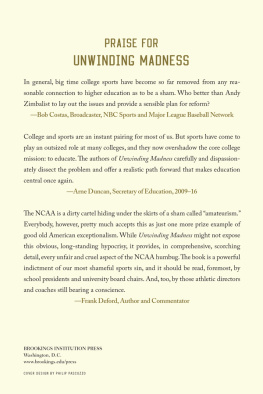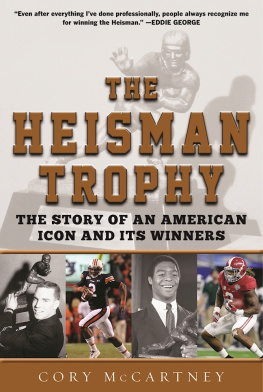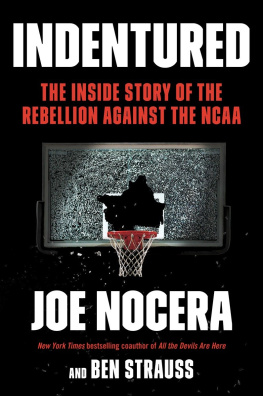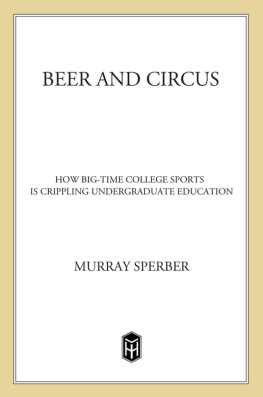Frank P. Jozsa Jr. SpringerBriefs in Economics College Sports Inc. 2013 How Commercialism Influences Intercollegiate Athletics 10.1007/978-1-4614-4969-0_1 The Author(s) 2013
1. Introduction
Abstract
For several decades in America, athletic programs in colleges and universities received financial support and resources primarily from their respective schools and such sources as alumni and the National Collegiate Athletic Association (NCAA). More recently, however, college coaches assigned to athletic departments and the presidents and marketing or public relations officials of schools organize, initiate, and participate in fund-raising campaigns. Thus, they obtain a portion of revenue for their sports programs from local, regional, and national businesses, and from other private donors, groups, and organizations. Because of this inflow of assets and financial capital, intercollegiate athletic budgets and types of sports expanded and in turn, these programs while controversial became increasingly important, popular, and reputable as revenue and cost centers within American schools of higher education.
For several decades in America, athletic programs in colleges and universities received financial support and resources primarily from their respective schools and such sources as alumni and the National Collegiate Athletic Association (NCAA). More recently, however, college coaches assigned to athletic departments and the presidents and marketing or public relations officials of schools organize, initiate, and participate in fund-raising campaigns. Thus, they obtain a portion of revenue for their sports programs from local, regional and national businesses, and from other private donors, groups, and organizations. Because of this inflow of assets and financial capital, intercollegiate athletic budgets and types of sports expanded and in turn, these programs while controversial became increasingly important, popular, and reputable as revenue and cost centers within American schools of higher education.
Purpose and Objectives
College Sports Inc. reveals how the practices, principles, and spirit of commerce influence athletics in American colleges and universities. The book identifies differences in the numbers, types and if available, costs of major college and university sports programs, and their sources of revenue. In addition, it examines how and when these costs and revenues occur, and whether they affect the success or failure of schools athletic programs.
More specifically, College Sports Inc. discusses the financial support and subsidies to college and university athletic programs from business firms such as media, retail, and technology companies, from organizations such as cultural and social enterprises, and from alumni and any special donors and groups who may be entrepreneurs and corporate foundations. Based on that information, the book analyzes how these businesses, civic organizations, special donors, and groups impact the quality and role of schools athletic directors, coaches, student-athletes, events, and facilities as their arenas, ballparks, and stadiums. Readers learn that although the effects of raising and allocating funds varies from good to bad, and substantial to insignificant, the trend in commercialism will continue to change and increasingly contribute to the operation, popularity, and future of college sports.
This book has six distinct and unique objectives. Listed in no specific order, they are:
Provides reference data and other information from academic reports, books, industry studies, and articles from journals, magazines, and newspapers.
Includes commentary from college officials, sports analysts, and the media.
Mentions a number of current developments, problems, and reforms associated with sports programs of schools in higher education.
Emphasizes how some schools reallocated their resources to compete athletically and to expand, market, and operate their major and minor sports.
Denotes how schools aggressively pursued and then accepted revenue, in part, from such sources as small and midsized businesses to national corporations.
Provides clues for officials in colleges and universities on how to increase their revenue base and to inform their athletic directors, coaches, and student athletes about potential issues with commercialism.
Colleges and universities have opportunities for their teams to compete in the amateur sports industry but also they must deal with economic, financial, and management realities. Their officials struggle, for example, when making decisions to allocate resources and raise money from commercial sources for their sports programs, and when they hire and compensate ethical and successful coaches, recruit academically eligible and talented student athletes and educate them enough to earn an undergraduate degree in a marketable major, implement and enforce regulations of the NCAA and the schools sports conference, and develop athletic budgets and maintain accountability of funds. College Sports Inc. addresses these issues, in part, by referencing and including research from the literature and recently published articles, books, Internet sources, reports, and studies.
Book Reviews
Since the 1970s, professors and such scholars as historians, sports economists, and other researchers have studied and authored a variety of articles, books, and reports about different aspects of the college sports industry. Since some of them were important references for College Sports Inc. , the following books on college and university sports programs and intercollegiate athletics include concepts, practices, principles, and theories in business administration, economics, education, finance, history, law, management, philosophy, public policy, and social science.
Written by Duke University professor of public policy studies, economics, and law Charles T. Clotfelter, and published by Cambridge University Press in 2011, Big - Time Sports in American Universities discusses the role of commercial sports and their contribution, function, and significance as core activities within these schools. More specifically and with respect to his research, Clotfelter discovered that during the past 80 years, editions of the New York Times reported the activities of major sports programs in detail and more frequently than any other topics involving 58 universities in the United States (U.S.). Such results, in turn, revealed the popularity and publics interest in these programs and in part, justified why head coaches, especially in football and basketball received more compensation than schools presidents earn and any professors.1
In addition to these matters, Clotfelter was surprised and thus he writes about different controversies and problems. These include the NCAA and its opposition to paying student-athletes for their performances, university leaders who ignore or underestimate the contributions in revenue generated by their athletic departments when they prepare their institutions budgets and plans, and violations committed by alumni and boosters who donate money, and by head and assistant coaches who recruit superstar athletes. In short, Clotfelters book exposes conflicts and relationships between athletic and educational departments, but also reveals the positive consequences and enjoyment of funding and supporting big-time sports programs of American universities.
In his book Varsity Green , which Stanford University Press published in 2009, author Mark Yost takes a behind-the-scenes look at the culture and corruption in college athletics. That is, he examines the conspicuous and high-revenue business of college sports and writes to inform readers why television revenues, merchandising rights, bowl game payoffs, sneaker contracts, and endorsement deals have financially rewarded the NCAA and head coaches rather than presidents of schools and others such as athletes who successfully played in games on teams. Yost explains why, and describes how, millions of dollars from such annual sporting events as football bowl games and college basketball championships, in part, corrupts college officials and seeps into communities, local politics, and even youth athletic organizations.2



